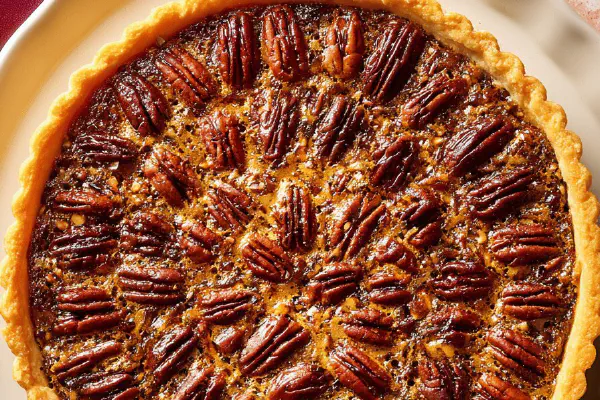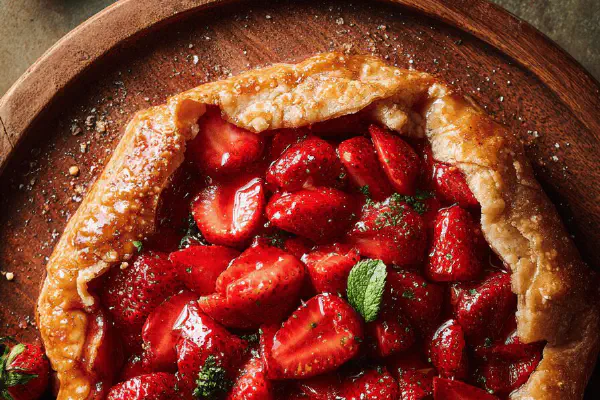Featured Recipe
Sablé Tart Crust with Lemon Zest

By Kate
"
Reworked pâte sablée using a mixture of all-purpose and cake flour for tenderness; swapped granulated sugar for powdered sugar for finer texture; replaced egg yolks with whole eggs for richer binding. Zest of lemon added for brightness. Slight adjustments in salt and butter quantities. Dough pressed directly into 22 cm pan. Baked at 190 °C with keen eye on color and scent. Focus on granular texture before baking, and firm but pliable feel when pressing. Tricky to work with too cold or too warm butter. Offers crisp, tender base, with adaptable method for gluten-sensitive or dairy-alternative needs.
"
Prep:
12 min
Cook:
18 min
Total:
30 min
Serves:
1 tart base 22 cm
French pastry
baking
dessert
tart
Introduction
You want a tart crust that’s sturdy but melts on your tongue. Forget rushing—technique beats speed. Butter temperature? Not room temp, slightly cooler to keep dough workable but not greasy. Too cold, chunks in dough, and patching becomes nightmare. Flour blending isn’t a kitchen trend—it’s purposeful. Adds structure without toughening. Sugar choice? Powdered sugar means fewer grittiness complaints. Egg yolks are classic, but whole eggs give reliable binding, especially if citrus zest is added. You’ll feel the dough texture — grainy but coming together. Pressing straight into pan saves mess, and watch it in oven—you want edges promising golden crisp, center firm but gentle. No dark spots, no cracks, no complaints. Cooling on rack? Non-negotiable. Steam escaping means crisp bottom, no soggy mess. Know these signals; improvise when needed. Sometimes it’s water drops or quick chill. Adapt and keep knives sharp—efficiency is in details.
Ingredients
About the ingredients
Flour ratio is deliberate for balance: cake flour tenderizes while all-purpose gives body. Never sub whole wheat here—harsh texture, drying effect. Butter quality matters—unsalted gives control; salted shifts final flavor unexpectedly. Powdered sugar blends quicker, dissolves into butter for finer crumb texture. Whole egg versatile, yolks richer but risk denser dough; you choose. Lemon zest isn’t decorative; its oils uplift flavor when baked in fat. Salt measured with precision; too little and blandness seeps in, too much stings edges. Beginners often overwork dough—resulting toughness follows. Chilling dough isn’t a must here, but helps if kitchen exceeds 22 °C (72°F). Modern tip: plastic gloves keep hands cool and clean while pressing dough, and prevent sticking better than floured fingers. Store dough wrapped for up to 24 hours; longer and butter behavior changes.
Method
PREHEAT AND PREPARE
- Center oven rack mid-position. Preheat to 190 °C (375 °F). A notch lower than usual — controls browning; crust will finish cooking off heat.
- In medium bowl, whisk flours, salt together. Cake flour softens the crumb, all-purpose adds structure. Makes crust tender but not fragile — balance is key.
- Use electric mixer or wooden spoon. Whip softened butter until creamy but not greasy, about 1-2 minutes. Add powdered sugar in increments, blend until pale and fluffy. Avoid overmixing — develops gluten; tough crust.
- Break egg into butter-sugar. Beat separately before mixing in, helps even hydration. Stir zest last, vibrant aroma signals citrus oils released, keeps flavor more upfront through bake.
- Use wooden spoon or spatula to fold dry mix into wet. Do not over stir. Expect gritty, thick dough. Grainy texture means flour fully coated with fat; crucial step. Overworked dough = shrinkage.
- Use fingertips, gently press into 22 cm loose-bottom tart pan. Target even thickness, avoid finger marks too deep. If cracks, pressing with flat bottom of a glass helps patch. Soft cold dough, pliable. Too warm? Chill briefly, 10 minutes max to avoid hardening butter too much.
- Slide into oven. Listen to faint sizzle, smell warm butter and citrus. Bake 15 to 18 minutes until edges golden, center slightly paler but firm to touch. Do not wait for full brown, residual heat finishes it. Too dark signals dryness.
- Place tart on wire rack immediately. Hot steam escapes, crust firms quickly without getting soggy on base. Avoid removing before fully set or it might sag or crack.
- If dough too crumbly, add teaspoon cold water sparingly. Too sticky? Chill 5-10 min or add dusting flour while pressing. Butter temp critical: too cold, won't bind; too warm, greasy dough warns against.
- Gluten-sensitive? Use all rice flour or blend with cornstarch but reduce butter by 10%, texture changes, press dough firmly to hold. Swap butter with coconut oil worked but flavor overtakes citrus.
- Powdered sugar replaced by superfine sugar if unavailable; sift before use.
- Egg: can omit one large egg, replace with 25 g aquafaba + 1 tsp lemon juice, but texture looser, bake with care.
- Lemon zest can be swapped for orange or lime, depending on filling.
DRY MIXTURE
CREAM BUTTER AND SUGAR
ADD EGG + ZEST
COMBINE DRY AND WET
PRESS INTO PAN
BAKING
COOLING
TROUBLESHOOTING
SUBSTITUTIONS
Technique Tips
Start with preheat—never after mixing dough—oven temperature influences crust color and texture directly. Mixing dry ingredients first avoids clumps and ensures even salt distribution. Creaming butter and sugar aerates dough, key to light crispness. Add egg beaten separately to avoid curdling. Mixing dry gently finalizes dough; overmixing commonly ruins texture by gluten over-development. Press dough evenly to avoid uneven baking and cracking. Use finger pads, not palm pressure. Baking times are guidelines; watch for scent of warm butter, light golden color at edges, and a dry, firm surface to touch. Cooling on rack essential to prevent sogginess from steam buildup. If in doubt, check bottom color by inverting tart gently. Adjust recipes for altitude or oven quirks by muting temp by 5–10 °C and extending bake by minutes. Problems? Too thick dough—don’t force; add water little by little. Cracks? Press with flat glass base, patch quickly before chilling. Learning dough feel is kitchen wisdom, more than timers or pictures.
Chef's Notes
- 💡 Beat butter until creamy; don’t overdo it. Prevent greasy dough. Zesty notes? Add zest at end. Smell the citrus oils released. That's key for flavor.
- 💡 If dough too crumbly? A teaspoon of cold water; adds moisture back. Better than forcing dry mix. Feeling rough? Use hands to check. Think pliable.
- 💡 Press dough evenly into the pan using fingertips. Cracks? Use a glass bottom to patch. Not too hard; just gentle pressure keeps it together.
- 💡 Watch oven closely. Color? Light golden brown, edges firm. Smell? Warm butter, citrus. Listen for a gentle sizzle. That's the sound of goodness.
- 💡 Cooling? Put on a rack right away. Steam escapes; crust stays crisp. Remove too soon, cracks happen. Better safe than sorry when setting.
Kitchen Wisdom
How to get the right texture?
Dough should feel grainy but coming together. If too sticky, chill it quick. Temperature's a big deal.
Can I use different flour?
Sure, but keep balance. Rice flour works, use less butter though. Whole wheat? No way, harsh texture.
What if it cracks?
Fix it fast with glass base. If too crumbly? One teaspoon water, not more. Control that mix.
How long can I store the dough?
Wrapped up for 24 hours fine. Room temp? Not beyond that. Watch butter’s behavior with time.



